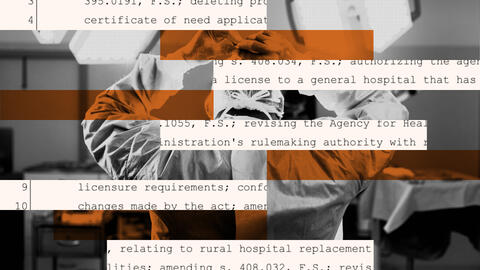Mark Holland’s new interpretation of the Canada Health Act: too little too late?
admin February 9, 2025 0
by Policy Options. Originally published on Policy Options
January 31, 2025
(Version française disponible ici)
In a letter sent to the provincial and territorial health ministers January 10, federal Health Minister Mark Holland announced a new federal policy on the Canada Health Act (CHA). Imprecise and incomplete, this interpretation raises more questions than it answers.
The policy states that as of April 1, 2026, “patient charges for medically necessary services, whether provided by a physician or other health care professional providing physician-equivalent services, will be considered extra-billing and user charges.”
Provinces and territories will not be required to report on these charges until December 2028, but if they fail to comply with the new policy, they will face a reduction in federal health funding.
This long-awaited position is in line with changes to the scope of practice for several categories of health-care professionals, who can now offer services that formerly could only be provided by doctors. It is also in line with the much-needed transformation of health-care systems, which must move away from a hospital-centric approach and draw on all available qualified resources to better meet people’s needs.
Table of Contents
ToggleMore care is covered, but which services?
The devil being in the detail, this federal initiative suffers from limitations, both in terms of how it was drafted and in legal terms. According to the letter, “the purpose of the policy is not to expand the core basket of services insured under the CHA” but to maintain services by extending coverage of medically necessary services by professionals other than doctors. But which professionals?
In addition to nurse practitioners, pharmacists and midwives are mentioned as examples in the ministerial letter. However, what is “medically necessary” in the law is not defined, and case law on this subject is not very enlightening, either.
There are already many variations in the coverage of physician services by provincial and territorial public plans. The situation is further confused by the fact that the policy states that it “does not include regulated health providers who had an overlapping scope of practice with physicians prior to the enactment of the CHA in 1984, and whose services were not considered insured at that time.”
The case of psychotherapy services
Using Quebec as an example, physicians can generally offer psychotherapy services covered by the public plan, even in primary care. Before the CHA was enacted in 1984, psychologists could also offer such services, but they were not covered by the public plan when provided in private practice. Since 1984, other professionals have been authorized to offer such services, subject to obtaining an additional licence.
Does this mean that psychotherapy services provided by these professionals in private practice will have to be covered by the public plan, but not those provided by psychologists? The same question could be asked of many other medically necessary services that, depending on the case, were already authorized for other professionals in 1984 or have since been authorized, such as nutritionists, podiatrists or optometrists.
Is it sufficient for a province to cover services provided within its institutional network, such as publicly funded nurse practitioner services in Quebec in family medicine groups and certain public nurse practitioner clinics, or should this coverage extend to all services provided in private practice?
Virtual care is not covered
Finally, the minister indicated in an interview that virtual care is not covered by his policy while he and his predecessor announced the opposite in previous statements, triggering opposition among the insurance industry and commercial telehealth platforms.
Private virtual consultation services are expanding rapidly and rely heavily on non-physicians to provide a whole range of services that can be described as “medically necessary” but are paid by patients or third-party payers such as insurers or employers. Waiting too long before regulating the funding of these services risks making the situation irreversible.
Can Ottawa force the provinces to pay for virtual care?
Crisis-level ratings of the health system are a flashing danger sign
Growing dissatisfaction with the healthcare system threatens its viability
Is the federal health transfer really growing faster than provincial spending?
Although the Canada Health Act often triggers debate about respect for the division of federal-provincial powers, its constitutional validity is well established. In legal terms, the main difficulty stems from expanding the notion of “insured health services” provided for in the Act by simple ministerial policy.
Following in the footsteps of previous federal legislation on hospital insurance and health insurance, the concept of insured health services is defined in Section 2 of the CHA and specifically covers hospital services and those rendered by a physician, whether in hospital or elsewhere, as well as surgical-dental services provided in hospital.
Thus, the only two professions specifically identified in the CHA are those of physician and dentist. There is no coverage requirement for the services of “other health care practitioners” as the condition of comprehensiveness set out in Section 9 indicates that it is up to the provinces to determine this. In the 2004 Auton case (para. 43), the Supreme Court of Canada stated that the CHA’s “only promise is to provide full funding for core services, defined as physician-delivered services.”
The validity of this interpretation is questionable
It is doubtful that a nurse practitioner, or any other health professional, can now be considered to meet the definition of “physician” set out in Section 2 of the Act. These various professions retain their own identity and their fields of practice, even when they overlap with medicine. They are each set up in their own way and cannot all be assimilated into medicine. A nurse practitioner cannot legally claim to be a doctor, nor can a doctor claim to be a nurse. When a nurse practitioner diagnoses or treats a patient, they are in fact practising the profession of nurse and not that of doctor.
What is more, nothing in the CHA prohibits the provision of private services at patients’ expense; rather, it requires the provinces and territories to set up a public system that complies with the conditions it establishes, including those of universality and accessibility. In the Supreme Court’s decision in Chaoulli (para. 16), Justice Marie Deschamps, writing for the majority, emphasized that “the Canada Health Act does not prohibit private health care service…”
Ultimately, it is hard to see how a policy or ministerial letter – an instrument that is not legally binding – could change the scope of the law to such an extent. Of course, to date, the CHA has been interpreted and applied mainly on a political and administrative basis, but the validity of this new interpretation letter could be seriously called into question if it were challenged before the courts by the provinces or other stakeholders.
The uncertainty over the real scope of the new ministerial letter is not just due to its content, but also to the current electoral turmoil in Ottawa. It is unclear whether this policy will be maintained and, if so, how it will be applied by the next government.
A missed opportunity to modernize the Act
Meanwhile in Quebec, five per cent of family doctors have the status of “non-participant” in the public plan and can therefore bill their patients for medically necessary services, which is also the case, to a lesser extent, for specialists. The same applies to nurse practitioners and other professionals in private practice outside family medicine groups.
In its current state, Bill 83, introduced last December by the Quebec minister of health, will do little to change this situation, since its sole purpose is to prohibit physicians in their first five years of practice from not participating in the public system. Ontario eliminated the non-participant status in 2004.
The current approach in Quebec would be contrary to the new federal policy, at least as far as we can understand it. But given its vague nature and fragile foundations, it is not certain that this policy will really change the course of health care. Especially since Quebec does not seem to have made any changes following a reduction in federal transfers of $42 million in 2023 due to the lack of coverage of diagnostic services outside hospitals. It will be interesting to see what follow-up is given to this issue in the next annual report on the CHA, due shortly.
Time will tell whether this ministerial policy will be sustainable and effective. If it is not, we may have to conclude the government missed an opportunity to modernize the CHA. This could have made it possible to better integrate other federal initiatives in the areas of drug insurance and dental care, as well as to better regulate certain current developments in private services without necessarily banning them, both in Quebec and elsewhere in Canada.
This article first appeared on Policy Options and is republished here under a Creative Commons license.
link






